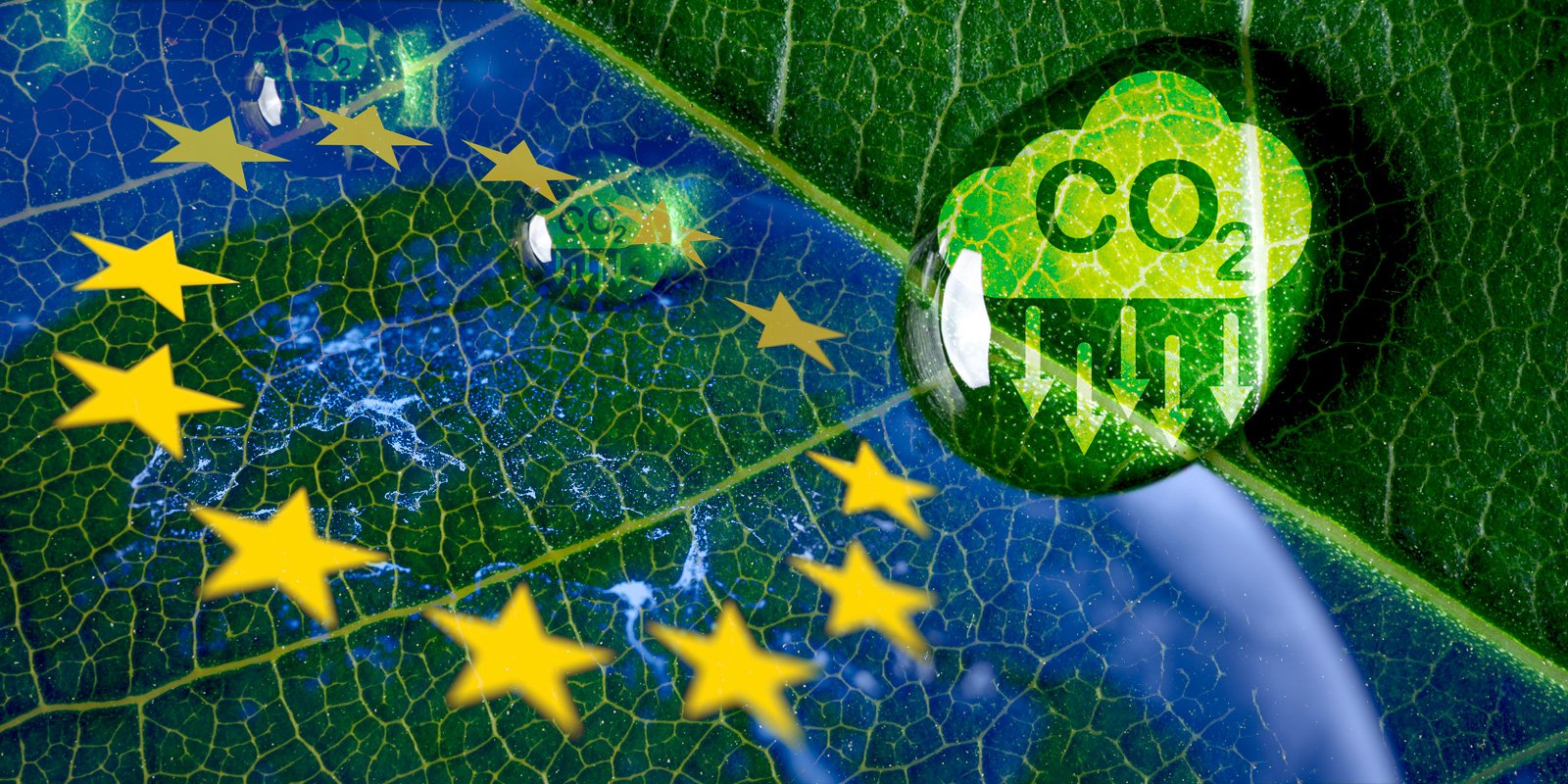
European Union Adopts Strategy to Develop Carbon Capture and Storage Technologies
In Short
The Development: The European Commission ("Commission") adopted an Industrial Carbon Management Communication ("Communication") on 6 February 2024, outlining the Commission's ambitions for a strategy to boost the deployment of technologies in the European Union ("EU") that can capture, store, transport, and use CO2 emissions from industrial facilities.
The Background: The EU is committed to reaching net-zero CO2 emissions by 2050 and is implementing a comprehensive policy framework to reduce net emissions by at least 55% by 2030. Technologies for carbon capture and storage ("CCS") and carbon capture and utilization ("CCU") (together referred to as "CCUS"), can play an important role in the EU's decarbonization efforts.
Looking Ahead: While the Communication does not change current rules, it identifies a series of actions to undertake at the EU and national level to establish a business environment that enables industrial carbon management in the EU in the decades ahead. However, upcoming European Parliament elections in June 2024 and the resulting change in the Commission raise uncertainty as to how the Communication's actions will be pursued after 2024.
Role of CCUS Technologies to Reach Climate Neutrality
The Communication recognizes that industrial carbon management technologies are part of the solution to achieving climate neutrality by 2050. These technologies will be most needed in "hard-to-abate" sectors with limited mitigation options.
The main applications identified thus far for carbon capture technologies are primarily from industrial process emissions, including in the cement, steel, and natural gas processing sectors, as well as in the production of electricity (especially from biomass) and of low-carbon hydrogen, refining processes, waste incineration, and thermal heat production.
CO2 Injection Capacity Target and the Contribution of Oil and Gas Producers Under the Upcoming Net Zero Industry Act
On the same day as the Communication's publication, a provisional political agreement was reached between the European Parliament and the Council of the EU on the Net Zero Industry Act ("NZIA") proposal, expected to be adopted in the coming weeks. The NZIA proposal recognizes CCS as among the strategic net-zero technologies.
The NZIA proposal includes a target for the EU to develop at least 50 million tonnes per year of CO2 storage capacity by 2030 in geological storage sites, including depleted oil and gas fields and saline aquifers. The proposal mandates EU oil and gas producers to contribute to delivering on this target pro-rata based on their oil and gas production between 2020 and 2023, recognizing the sector's specific know-how in this field.
Deploying CO2 Transport Infrastructure
Technological solutions exist to capture, transport, use, and store CO2. However, operational large-scale CCUS projects are currently limited in Europe, as industry stakeholders face a number of challenges, as further detailed below. The Communication puts forward a strategy aimed at addressing these challenges across the CO2 value chain and boosting the EU market for carbon management.
In particular, the successful large-scale deployment of CCUS necessitates building infrastructure for transporting captured CO2 from its sources to storage sites. In order to increase certainty for investors and optimize the development of CO2 transport infrastructure in line with the NZIA's upcoming provisions, the Commission announced that it will initiate preparatory work this year on a potential CO2 transport regulatory framework that will consider issues such as market and cost structure, cross-border integration and planning, technical harmonization and investment incentives for new infrastructure, third-party access, competent regulatory authorities, tariff regulation, and ownership models.
The Commission also foresees working towards proposing an EU-wide CO2 transport infrastructure planning mechanism, which will notably consider the potential repurposing and reuse of existing infrastructure for CO2 streams. In addition, the Commission will work on establishing minimum quality standards for CO2 streams, addressing issues such as composition, purity, pressure and temperature, to ensure the integrity of the infrastructure and reservoirs.
Boosting CO2 Capture and Developing Storage Sites
Industrial companies in hard-to-abate sectors are increasingly developing investment plans to capture CO2, either for reuse to produce fuels or chemicals (CCU purposes) or to permanently store it (CCS purposes). However, investment decisions depend on the price evolution of CO2 emissions under the EU Emissions Trading System ("ETS"), the development of markets for low- or zero-carbon end products, and the availability of a full CO2 value chain with capture, transport, utilisation, or storage services offered at competitive prices.
In cooperation with EU Member States, the Commission will develop by 2026 a platform for demand assessment and aggregation, with the aim of matching CO2 suppliers with storage and transport providers. The Commission will also work on creating and making available by 2026 an EU-wide investment atlas of potential CO2 storage sites. The Commission plans to develop guidance for CO2 storage permitting notably regarding the transfer of responsibility from operators back to the competent authorities to facilitate final investment decisions and improve financial security for project promoters.
In addition, the Commission aims to assess options to foster the utilization of captured CO2 as a resource to replace fossil fuels in industrial production, e.g., in the manufacturing of synthetic fuels, chemicals, polymers, or minerals.
Funding Opportunities
The carbon price signal in the EU ETS will be key to making CCS projects commercially viable. In practice, however, the costs of capture, transport, and storage of CO2 currently exceed the ETS price of emitting the same amount of CO2. Support at the EU and national level will therefore be necessary in order to kick-start the development of the CCS market.
Among the opportunities for public funding, these include:
- At the EU level, the EU ETS Innovation Fund for selected innovative large-scale CO2 projects, the Connecting Europe Facility Energy for the development of cross-border energy and transport infrastructure projects, and Horizon Europe for research and innovation on industrial carbon management technologies.
- At the national level, the Recovery and Resilience Facility, or State aid under the conditions specified in the Commission's Guidelines on State aid for climate, environmental protection, and energy and the General Block Exemption Regulation to support investments in carbon capture. Government support could take the form of "Carbon Contract for Difference" schemes to close the gap between the carbon price and the projects' costs.
The Commission, in conjunction with Member States, also plans on developing a possible Important Project of Common European Interest ("IPCEI") in the area of industrial carbon management.
Four Key Takeaways
- The EU recognizes that CCS and CCU technologies can help to decarbonize production processes in industrial sectors that are important for the European economy, complementing other decarbonization efforts.
- The Industrial Carbon Management Communication presents the Commission's strategy to enable the deployment of these technologies across the entire CO2 value chain in the EU, including the development of CO2 transport infrastructure and storage sites.
- It remains to be seen how EU legislators will address key questions that have thus far impeded the large-scale deployment of these technologies (e.g., long-term accountability of storage site operators for maintaining relevant storage sites and liability for leakages, and the need for standardization across Member States with respect to minimum CO2 quality standards). The future EU framework will also require flexibility in order to take into account differences between each capture project, depending on factors such as location, available transport networks, and industrial ecosystems.
- There is also uncertainty as to whether and when the price of ETS allowances will reach a level that makes CCS projects commercially viable. In this context, public support along with a clear policy framework will be vital to increase certainty for investors.








